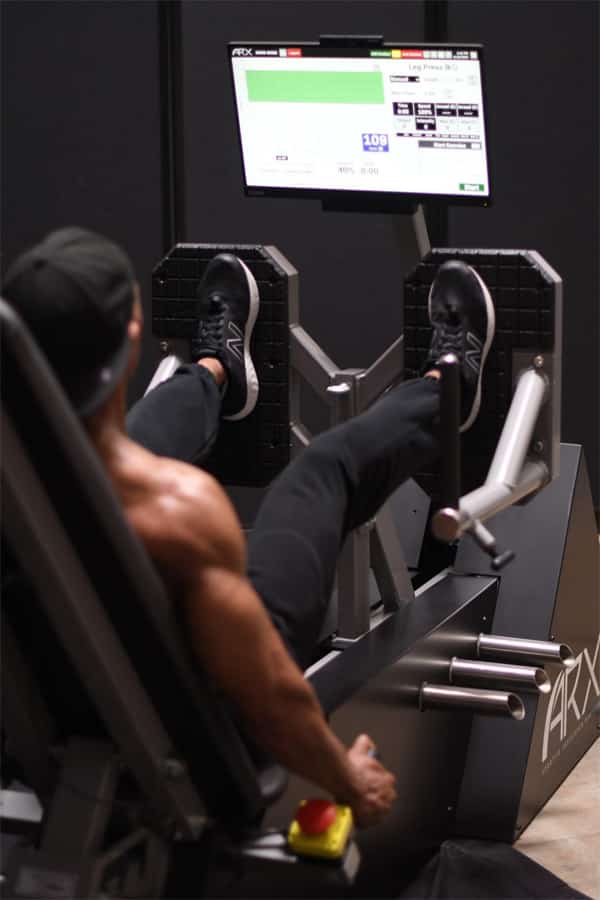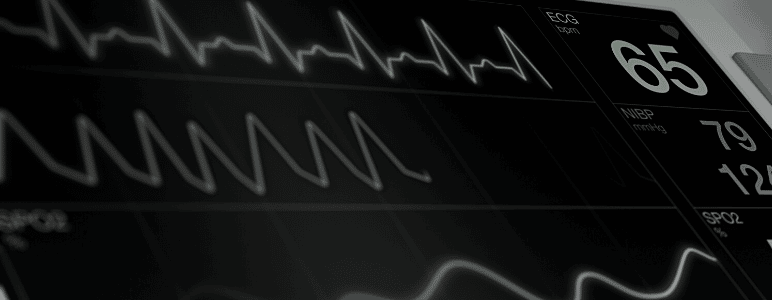Originally published on arxfit.com
Cardiovascular fitness is a desired benefit of any proper exercise regimen. People commonly spend hours per week jogging, biking, swimming, or on a machine at the gym in pursuit of heart health and improved fitness.
This begs the common question: is resistance training good for your heart? Well, it turns out that resistance exercise is actually the best activity to perform for heart health and global metabolic conditioning.

RESISTANCE TRAINING DOES EVERYTHING “CARDIO” DOES
Wait, What?
The cardiovascular system’s primary purpose is to serve the working muscles, and resistance exercise places demands on those muscles most efficiently and most safely as compared to all other types of exercise.
A great example of this is a 2012 meta-analysis in the Journal of Exercise Physiology that found that the types of adaptations one would expect from traditional endurance-type aerobic exercise can be acquired just as completely through resistance training.
These adaptations include (but are not limited to):
- an up-regulation of mitochondrial enzymes
- increased time-to-exhaustion
- enhanced mitochondrial proliferation
- phenotypic conversion from type IIx towards type IIa muscle fibers
- vascular remodeling (including capillarization)
We all understand the muscle development or bone density benefits of resistance exercise. But to understand why resistance exercise can have all the same cardiovascular benefits as traditional “cardio,” it is necessary to understand that the cardiovascular adaptations we’re after are produced by the body in proportion to the intensity with which the muscles are made to contract.
For example, all things being equal, higher intensities of exercise (ARX rather than jogging, for instance) are more effective for improving VO2max, a primary determinant of cardiovascular fitness. Strength training makes your heart younger.
It was also found that, at a sufficient intensity, six minutes of exercise can be just as effective for cardiovascular fitness and condition as an hour of daily moderate activity. Strength training gives better cardiovascular results in less time.
This study noted that strength training for less than an hour a week may reduce your risk for a heart attack or stroke by 40 to 70 percent. Strength training makes your heart healthier.
Time and time again the literature suggests that less intense, longer-duration exercise carries no benefit when compared to more intense—yet brief—exercise. Strength training saves you time when compared with other “cardio” modalities.
Intense resistance exercise is even superior for adaptations related to the health of the heart organ itself. Strength training can reduce your risk of heart disease.
HOW RESISTANCE TRAINING IS GOOD FOR THE HEART
Dr. Doug McGuff has written an excellent article entitled “Cardiovascular Adaptations,” wherein he shares a dense bibliography of studies supporting the use of strength training for cardiovascular health.
He writes:
“All the changes that are produced by traditional cardiovascular exercise (which was previously thought not to occur with resistance training) are actually produced to an even greater degree with high-intensity resistance training.
Furthermore, all the potential dangers to the cardiovascular system such as increased blood pressure and heart strain—that have been attributed to resistance training—actually turn out to be nothing more than a myth.
In my [medical] opinion, resistance training is actually protective of the heart during exertion. Increased blood return to the heart increases coronary artery blood flow. This allows for higher levels of exertion with less risk of coronary ischemia. For people with coronary artery disease, resistance training may prove to be the safest and most effective way to improve their cardiovascular health.”
Supporting the above, he points out:
- This study that showed that not only was resistance exercise well-tolerated by patients with congestive heart failure, but it actually caused a decrease in systemic vascular resistance, which resulted in an increased cardiac index and enhanced left ventricular function. And this was in a population that was unable to perform traditional “aerobics.”
- In this study, men over the age of sixty-five with hypertension were able to move from the “high normal” category to the “normal” category after six months of strength training.
- This meta-analysis supports the efficacy of progressive resistance exercise for reducing resting systolic and diastolic blood pressure in adults.
You can read more from his article here.
“CARDIO” ISN’T ENOUGH—FOR A HEALTHY HEART, ADD RESISTANCE TRAINING
The most important point to understand is that when an improvement is observed in someone’s “cardiovascular fitness,” regardless of the activity being performed, what’s actually being observed is an improvement inside the working muscles.
The muscles are where the action is, not the cardiopulmonary system.
An elegant study was performed in 1976 in which the experimenters recruited thirteen subjects and trained them on a stationary bike. But crucially, each participant only trained one leg the entire time.
The trained leg employed a sprint and/or a low-intensity steady-state protocol. The subjects performed four or five of these workouts per week for four weeks.
After the study, when the researchers tested the subjects’ VO2max by having them repeat the exercise with the trained limb, they noted an increase in VO2max of twenty-three percent.
This one-legged exercise was supposed to produce a full-body cardiovascular adaptation, but when the experimenters tested the subjects’ untrained legs, they discovered that the untrained limbs showed no improvement in VO2 max at all.
But wait a minute. If “cardio” improves the heart and the lungs, shouldn’t the full body receive this VO2max benefit? Why didn’t the heart and lungs confer that improvement to both legs?
The answer is the same point that was made above, which is that when an improvement is observed in someone’s “cardiovascular fitness,” what’s actually being observed is an improvement inside the muscles—not the heart or lungs. The muscles are where the action is.
This is why jogging will give you a better result than walking, running will give you a better result than jogging, and sprinting will give you a better result than running.
A greater demand is being placed on the muscles as you move faster, and as a result, the cardiovascular adaptations become more robust.
USE ARX FOR YOUR HEART-HEALTHY RESISTANCE TRAINING
The tradeoff here is that you must reduce your total volume of exercise as you increase the intensity, in order to avoid overtraining and injury.
And while this may seem like a bug—“I want to work out for longer, but I can’t!”—it’s actually a huge feature. It means that by briefly placing an intense demand on your muscles, you can provoke every desirable cardiovascular adaptation of which your body is capable.
And what’s the best way to place a brief but very intense demand on the muscles?
Answer: resistance training.
And what’s the best tool available for resistance exercise?
Answer: ARX.
THE BOTTOM LINE
We now know that the muscles are where the action is when it comes to heart health. In fact, it appears almost impossible to access or stimulate the heart and lungs for the purpose of administering an exercise stimulus without the involvement of the muscles.
The harder the muscles are made to work, the greater the cardiovascular adaptations. And this is where ARX shines, since it is not possible to work harder than “one-hundred percent effort all of the time,” which is one of many options when using ARX’s Adaptive Resistance™.
And not only does the matched resistance allow the user to place the greatest demand possible on the muscles at all times, it does so in a manner that is safer and more quantifiable than any other tool available.
The conclusion, then, is unavoidable.
If your goal is to maximally stimulate the cardiovascular system, you need to maximally stimulate the muscles that this system serves and supports.
And since ARX is currently the best tool available for this purpose, it also means that ARX is the best tool to condition the cardiovascular system.
ARX is good for your heart—and it doesn’t take much!
Subscribe To Real-Time Updates
Recommended Reading
1 Minute of High Intensity Exercise vs. 45 Minutes of Moderate Exertion
1 minute of high intensity! This is why the Quantify Fitness method works! Using high-intensity training on ARX rivals other methods in 10 minutes a week.
Is Alcohol Okay on Training Days?
Consuming alcohol following resistance exercise could potentially hamper the desired muscular adaptations by reducing anabolic signaling.
8 Reasons You Should You Lift Weights
According to the research, one of the best things you can do for your health and body composition is strength training.
Isometric Exercise Using ARX
The beauty of ARX is we can do only concentric loads (the positive portion of the range of motion) or isometric (static exercise/no movement).
How is 10 Minutes a Week Possible?
With ARX at Quantify Fitness you can achieve maximal results in strength, hypertrophy, and metabolic conditioning in 10 minutes a week.
Focus on Building Muscle
Want to improve your body composition? Put on some muscle and quit spending all your time on the treadmill!
Quantify Fitness in the News!
NewsChannel5 came by our smart gym to find out how a weekly 10 minute workout can really be that effective.
Watch Former NFL Tennessee Titan and Pro-Bowl Receiver Derrick Mason’s Reaction to His 6 Minute Workout
We had a blast showing Derrick Mason around the gym! And even more fun seeing his reaction to the 10 minute workout!
The Benefits of Whole-Body Vibration Training
Whole-body vibration therapy is used by universities, professional sports teams, and medical facilities for a range of benefits.
Pre vs. Post-Exercise Protein Intake – Which is Better?
That conventional advice that consuming protein post-workout to achieve strength and hypertrophy gains may be flawed...
Will Missing a Workout Hurt My Progress?
We occasionally get asked whether missing a workout will hurt a client's progress.
What is Your Body’s Preferred Source of Energy?
What is your body's preferred source of energy is? The 1,600 calories of stored sugar or the 96,000 calories of stored fat?
